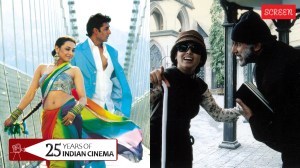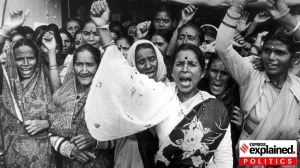Mother lives here
Every once in a while history is gifted with an individual who comes to change the very spirit of humankind. Mother Teresa, whose birthday f...

Every once in a while history is gifted with an individual who comes to change the very spirit of humankind. Mother Teresa, whose birthday fell on Monday, was one such. It is five years ago this month that she died, after having spent the last 50 years of her life serving the poorest of the poor. Her death was accorded honours, but to her they mattered little. Each moment of each day was, for her, an opportunity to ‘do something beautiful for God’. The beauty lay in cleaning a leper’s wounds, in rescuing a dying person from a gutter, in loving all the unloved she could find.
Mother Teresa left behind the Missionaries of Charity, which had its genesis in a Calcutta slum 53 years ago and is now spread over 129 countries. Years before she died, questions arose over what would happen to the Order after she went. To her the question was irrelevant: it was God’s work, He would provide. This answer did not always satisfy people. Concerns persisted.
I had not been back to Calcutta since Mother had passed on. Last month I went back. I entered Motherhouse with mixed feelings, for on earlier visits I had always gone straight to see her. But, strangely enough, I felt no unease. Walking around the familiar courtyard nothing seemed to have changed, except for a life-sized statue of Mother that now stood outside the chapel.
I snatched precious moments of the Sisters’ time to talk to them. They radiated the same warmth I have always associated with them. I asked Sister Gertrude, one of Mother’s earliest postulants, if they still saw as many visitors as when Mother was alive. As if one cue, two visitors walked in and made their way to the statue. Then they moved to the chapel where Mother lies buried in a simple, cemented tomb. Sister Gertrude chuckled, ‘‘First they came to see her, now they come to see her tombstone!’’
Over the next few days, I visited the other homes. At Shishu Bhawan, I was delighted to find Sister Marjorie. She said, ‘‘When Mother was alive, we did not see her very often, she had so much work. But now, in spirit, she is always here. I talk to her when I have problems and she helps in so many ways.’’ Nirmal Hriday, at Kalighat, the home for the destitute and dying, is a place I am always compelled to return to. Here pain becomes an instant part of one’s experience. But, just as quickly, I find myself taken beyond the sadness and the pathetic waste of a life ebbing away. This was Mother’s great gift. While tending the body she went beyond to the broken heart and spirit.
Between her chores, the Superior, Sister Georgina, spent time with me. We were surrounded by activity; several Sisters were taking care of about a 100 inmates. Surveying the beds around us, Sister Georgina remarked that if possible, even more destitute people were coming to Kalighat. I asked why. With a twinkle in her eye she said, ‘‘Well, now that Mother is in Heaven, she finds it much easier to send them right to our door!’’ This day, too, the awareness of pain penetrated me as soon as I entered. But almost immediately I was lifted beyond it. Mother’s aura of love remains as powerful as ever.



- 01
- 02
- 03
- 04
- 05




























